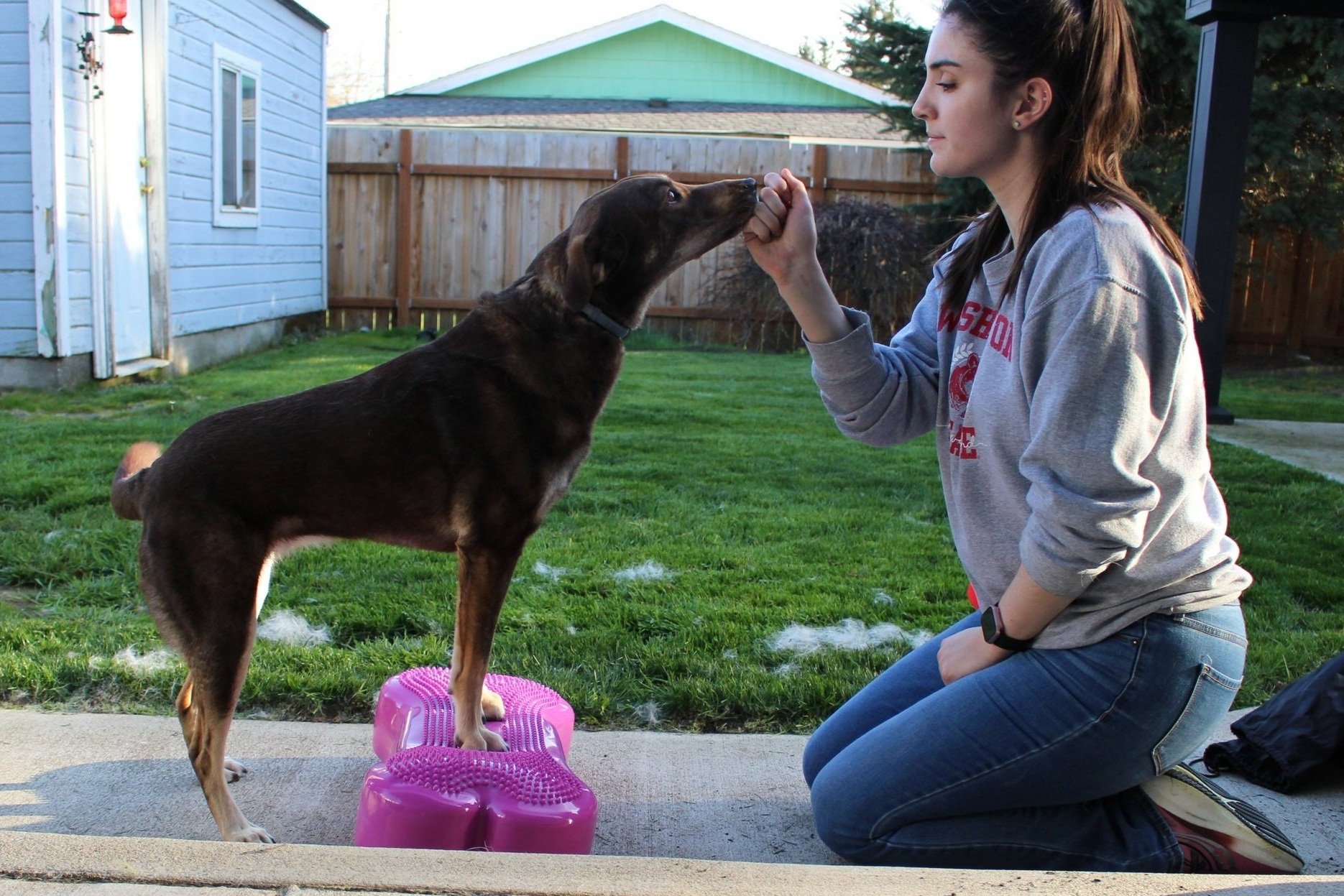Interventions
-

Exercise
Therapeutic exercise is used to target deficits in strength and mobility. This includes a personalized home exercise program to help maintain and improve your dog’s strength and mobility between appointments. Whether your dog is recovering from surgery, managing arthritis, or experiencing muscle weakness, exercise is a key component of their rehabilitation.
-

Manual Therapy
Manual therapy techniques are employed to address soft tissue deficits, such as tight muscles and scar tissue. This can include stretching, soft tissue mobility techniques for painful muscles, and scar mobilizations to break down adhesions from past surgeries or injuries. These methods help reduce pain and improve movement.
-

Neuromuscular Re-education
Neuromuscular re-education focuses on improving balance, proprioception (awareness of body position), and coordination. Treatment may include exercises on uneven surfaces and manual techniques to challenge your dog’s stability and restore their functional movement patterns. This is especially beneficial for dogs with neurological conditions or recovering from surgery.
-

Modalities
We use various modalities to address pain, inflammation, and tissue healing. These may include cold laser therapy, PEMF (Pulsed Electromagnetic Field) therapy, and IFC (Interferential Current) therapy. These treatments help reduce inflammation, promote tissue healing, and manage pain as your dog recovers and regains mobility.
-

Bracing (Fitting/Training)
We provide bracing services for orthopedic and neurological conditions, including CCL (cranial cruciate ligament) tears, Achilles ruptures, degenerative myelopathy, brachial plexus injuries, and carpal hyperextension injuries. This includes measuring and fitting both over-the-counter and custom braces to support your dog’s recovery.
-

Wheelchair (Fitting/Training)
For dogs with conditions like IVDD (intervertebral disc disease), brachial plexus injury, degenerative myelopathy, or those who have had amputations, we offer wheelchair fitting and training. Custom wheelchairs (both front and rear wheel) are measured and ordered to help your dog regain mobility and independence.
Appointment Types
Evaluation
The initial evaluation lasts approximately 90 minutes. Before the visit, we will obtain your dog's vet records and review their condition. During the visit, we will gather information from you about your dog’s behaviors, medical history, functional limitations, and goals for treatment. A physical evaluation will assess your dog’s strength, range of motion, neurological status, and soft tissue limitations. Treatment will be provided as necessary, and a report will be sent to your referring veterinarian.
Treatment
TFollow-up treatment visits last 45-60 minutes and include a combination of therapies tailored to your dog’s needs. Treatment may include manual therapy for stretching and soft tissue tension relief, therapeutic exercise for strength and mobility, neuromuscular re-education for balance and stability, and modalities for pain management, tissue healing, and muscle retraining.
Progress Reports
Every 5-10 visits, we will provide a progress report to assess your dog’s rehabilitation. These reports will help determine whether adjustments to the treatment plan are needed to achieve the best outcomes. Each progress visit lasts approximately 60 minutes, and a detailed report will be sent to your dog’s referring veterinarian.
